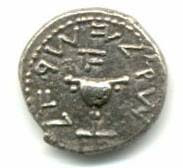Diving Into Darkness: A True Story of Death and Survival by Phillip Finch is a great read about some of the most extreme diving ever performed. As can be expected by the title yest there is the loss of a great diver and another diver survives by the thinnest of margins.
The book tells the tale of the two main protagonists, David Shaw and Don Shirley and their quest in 2005 to recover the body of Deon Dreyer a young diver who had died in 1994 at the Bushman's Hole site in South Africa and whose body was never found or recovered until it was encountered by David Shaw during a deep dive expedition into Bushman's Hole.
It was 270 Meters deep to the body (that's 886 feet!). The book gives depth in meters and sometimes it doesn't sound quite so bad, but once you realize that you have to multiple those depths by about 3.3 times to convert to feet you realize it is a whole different ballgame.
Without revealing the entire plot, a team of divers set out to recover the body, with David Shaw going solo from to 270 meters to recover the body then to meet back with Don Shirely at 220 meters. Unfortunately Shaw didn't return alive.
He suffered a cascading failure at great depths - carbon dioxide buildup from working to strenuously to place the body in a transport bag at depth, out-breathing his rebreather and getting his canister light head caught in the guideline to the surface (We're taught in GUE and UTD to clip everything, including lights off when not in use, he on the other hand was trained, or used to wrapping the cord around his neck, and on this dive for reasons explained in the book he let it dangle and it got caught in the line - this incredibly minor mistake at depth when combined with the other problems caused his demise). Could these problems have been avoided if he wasn't diving solo? Probably as someone else could have freed him from the entanglement, bailed him out onto a different breathing gas system or pushed him to call the first attempt in time. The problem is there's incredibly few divers that can handle that kind of depth so dive buddies are few and far between. Both Shaw's and Dreyer's bodies were later recovered as they had risen to a recoverable depth.
Even more incredible is what happened to Don Shirley on the ascent stage of the dive - having descended past 250 meters to try and help Dave Shaw, as he ascended he suffered an inner ear hit that left him suffering vertigo, nausea and a complete lack of balance - with hours of decompression to go and a broken rebreather he had to operate manually. Think of retching with nausea for hours - now picture doing it underwater for hours while hanging on a guideline that if you left go you'll spin off and be unable to find your way out. Incredible skill, concentration and guts doesn't begin to start to describe what Don Shirley had to posses to survive that ordeal.
This is a great, well-written book about some of the most extreme diving ever attempted and the risks and consequences of diving to such depths where even the most minor mistakes can snowball to disaster brutally quickly.

No comments:
Post a Comment